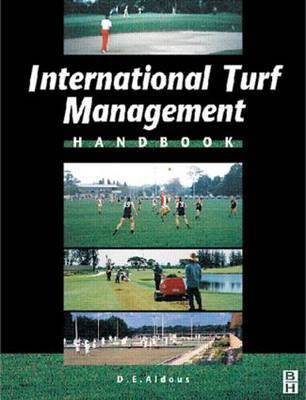
Je cadeautjes zeker op tijd in huis hebben voor de feestdagen? Kom langs in onze winkels en vind het perfecte geschenk!
- Afhalen na 1 uur in een winkel met voorraad
- Gratis thuislevering in België vanaf € 30
- Ruim aanbod met 7 miljoen producten
Je cadeautjes zeker op tijd in huis hebben voor de feestdagen? Kom langs in onze winkels en vind het perfecte geschenk!
- Afhalen na 1 uur in een winkel met voorraad
- Gratis thuislevering in België vanaf € 30
- Ruim aanbod met 7 miljoen producten
Zoeken
Omschrijving
Grasslands take up approximately one-quarter of the world's vegetative cover. Turfgrasses protect the land from erosion, stabilize the soil, moderate the temperature and provide low cost safe surfacing for many sporting and leisure activities. Amenity grasslands - and turf in particular - do more than form a significant part of the global landscape. They make up the basis of a multimillion dollar industry. International Turf Management Handbook covers the establishment, maintenance, and management of natural turfgrass surfaces. This handbook is arranged in four sections. The first section details the identification and selection of turfgrasses, how they grow, and their maintenance. The second section focuses on the management and administration of the turfgrass business. The third section addresses current standards and their use to effectively manage different surfaces such as bowling, croquet and golf greens, grass tennis courts, cricket tables, football and athletic fields, racetracks, and golf fairways. The final section discusses important environmental issues in turf management, including water resources, pesticides and fertilizers. Developed in association with more than 20 leading turf management authorities, the International Turf Management Handbook details the how the natural turfgrass surface functions. It explores strategies that blend biodiveristy and sustainability with the business of maintaining turf. It is essential reading for agriculture, horticulture, and natural resource professionals, and land managers.
Specificaties
Betrokkenen
- Auteur(s):
- Uitgeverij:
Inhoud
- Aantal bladzijden:
- 360
- Taal:
- Engels
Eigenschappen
- Productcode (EAN):
- 9780849301025
- Verschijningsdatum:
- 27/09/1999
- Uitvoering:
- Hardcover
- Formaat:
- Genaaid
- Afmetingen:
- 185 mm x 258 mm
- Gewicht:
- 857 g

Alleen bij Standaard Boekhandel
+ 540 punten op je klantenkaart van Standaard Boekhandel
Beoordelingen
We publiceren alleen reviews die voldoen aan de voorwaarden voor reviews. Bekijk onze voorwaarden voor reviews.









